20 White Birds in Alabama
Alabama is home to many white bird species that can be found in wetlands, coastal areas, and open fields. These birds range from egrets and swans to gulls and pelicans, each with unique features and behaviors. This article highlights some of the white birds you might encounter in Alabama.
1.Great Egret

The Great Egret is a tall, graceful bird commonly seen in Alabama’s wetlands and waterways. Its white plumage and striking long neck make it one of the most recognizable wading birds. This species is often observed standing still in shallow waters, patiently waiting to catch its prey.
- Habitat: Wetlands, lakes, and marshes.
- Fun Fact: Known for its elegant, long neck and slow, deliberate hunting style.
2.Snowy Egret
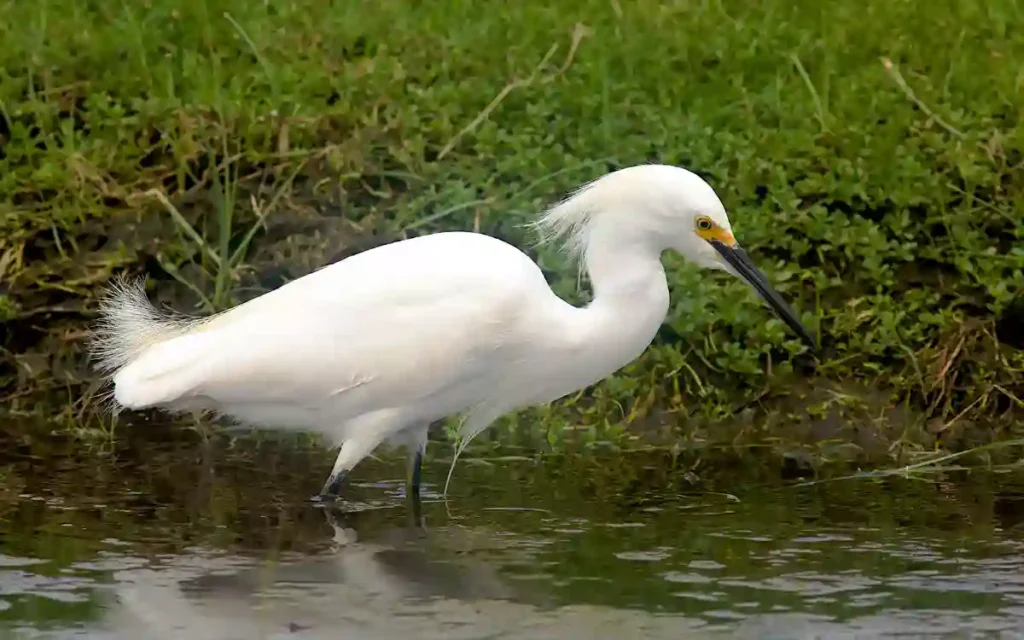
The Snowy Egret is a small, white heron with distinctive black legs and bright yellow feet. It is often found foraging in shallow waters, where its energetic hunting style and striking appearance make it stand out among other birds.
- Habitat: Coastal marshes, estuaries, and shallow waters.
- Fun Fact: Its yellow feet, often called “golden slippers,” are thought to help attract prey in the water.
3.Cattle Egret
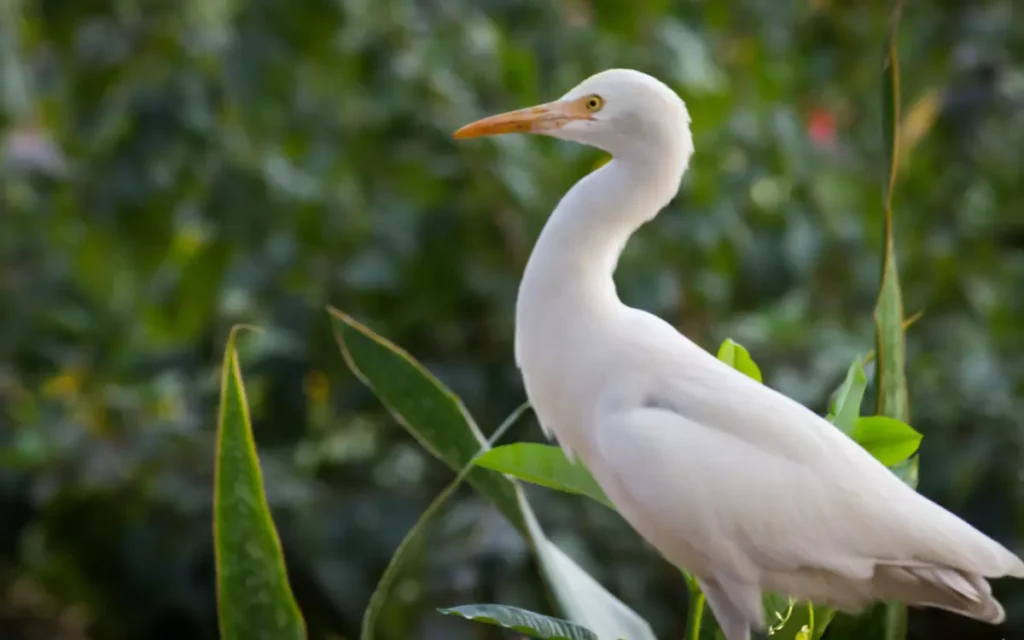
The Cattle Egret is a compact white bird often seen near grazing livestock. Unlike other egrets, it prefers grasslands over wetlands and is frequently spotted feeding on insects stirred up by animals.
- Habitat: Grasslands, farmlands, and near cattle herds.
- Fun Fact: Known for its symbiotic relationship with cattle, following herds to feed on insects.
4.American White Pelican

The American White Pelican is one of the largest birds in North America, easily recognized by its massive wingspan and long, yellow bill. Unlike other pelicans, it often feeds cooperatively in groups.
- Habitat: Lakes, rivers, and coastal areas.
- Fun Fact: Instead of diving, they work together to herd fish into shallow water for easier capture.
5.White Ibis
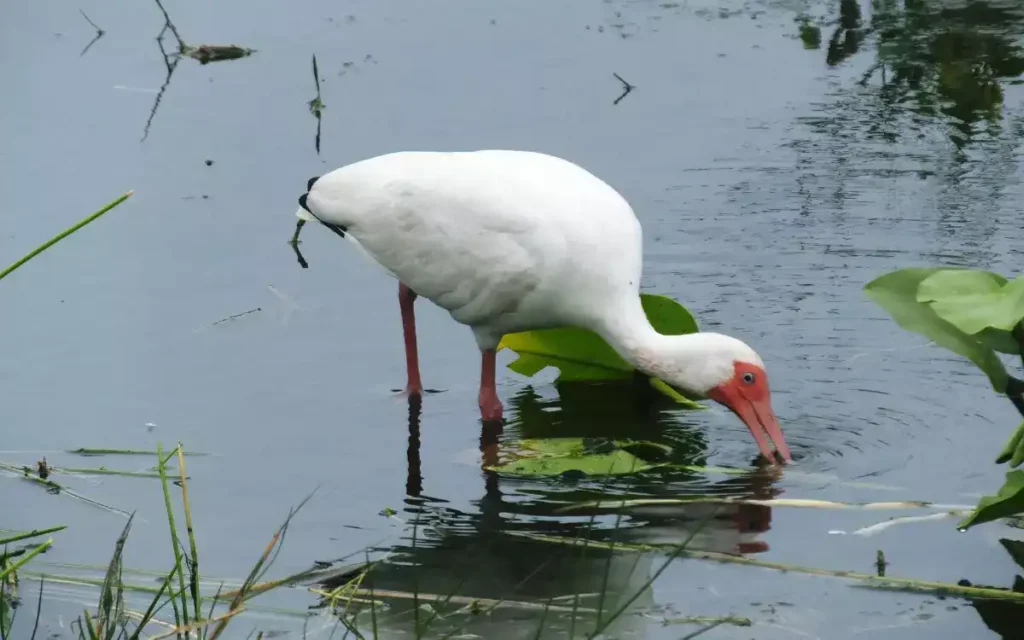
The White Ibis is a medium-sized wading bird with a bright red bill and legs that contrast beautifully with its white feathers. It can often be seen feeding in shallow wetlands, probing the mud for food.
- Habitat: Wetlands and coastal areas.
- Fun Fact: The curved shape of its bill is perfectly adapted for catching small crustaceans and insects.
6.Trumpeter Swan
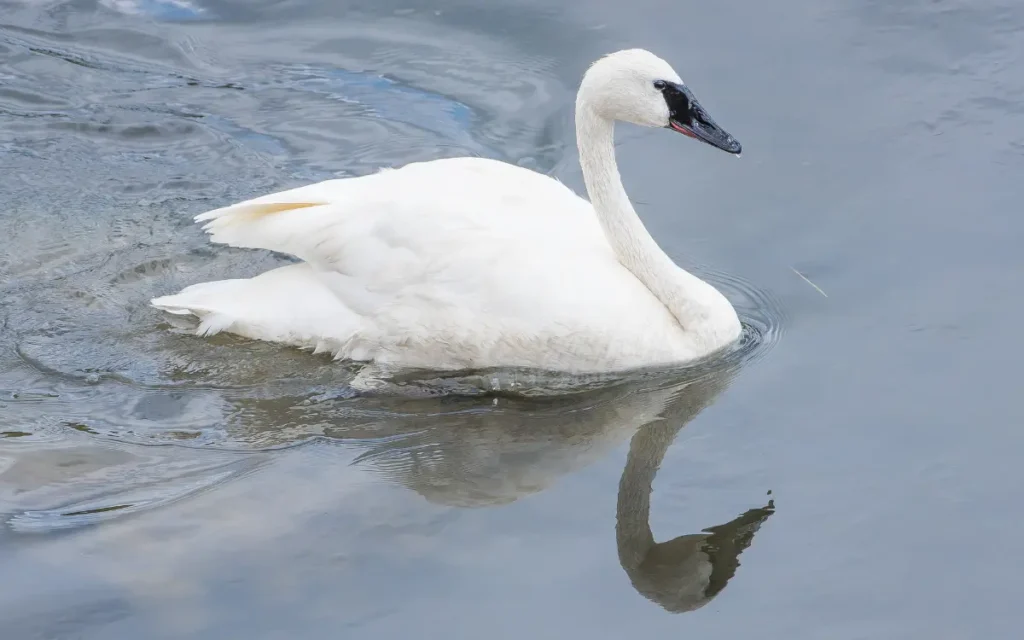
The Trumpeter Swan is a magnificent white bird and the largest waterfowl in North America. Known for its impressive size and resonant calls, it’s occasionally spotted in Alabama during migration or winter months.
- Habitat: Lakes and large ponds.
- Fun Fact: Its name comes from its deep, trumpet-like call, which can carry over long distances.
7.Tundra Swan

The Tundra Swan is a smaller cousin of the Trumpeter Swan, often seen in flocks during migration. Its graceful movements and soft, honking calls make it a memorable sight near Alabama’s waterways.
- Habitat: Wetlands and open water during migration.
- Fun Fact: Distinguished by a yellow spot near the base of its black bill.
8.Mute Swan
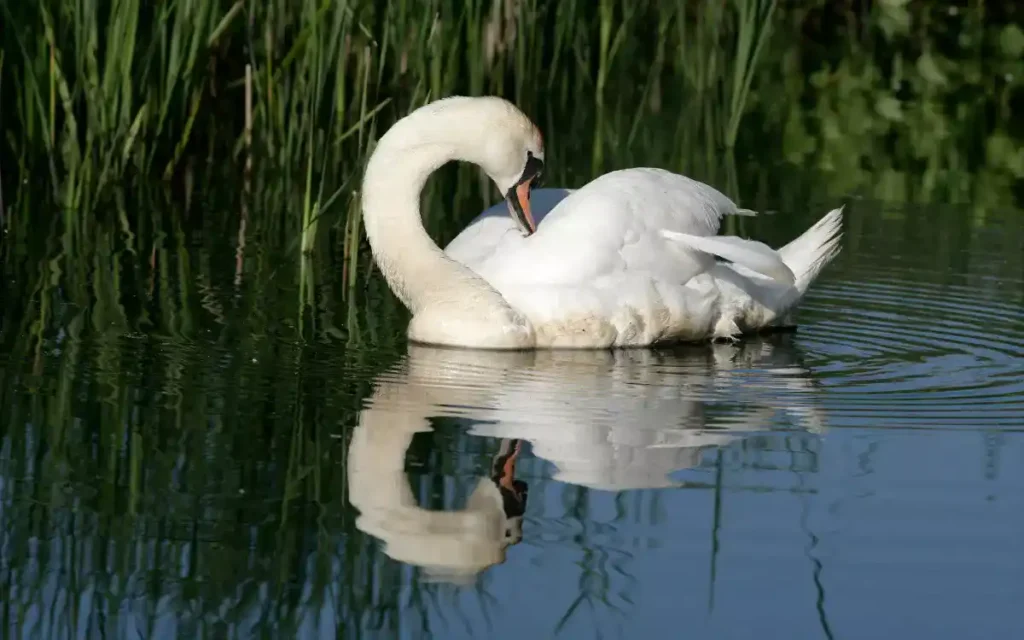
The Mute Swan is an elegant bird often found gliding serenely on ponds and lakes. Known for its S-shaped neck and orange bill, it’s a non-native species that adds a picturesque element to Alabama’s waterways.
- Habitat: Ponds and ornamental lakes.
- Fun Fact: Unlike other swans, it is typically silent, hence the name “Mute Swan.”
9.Ring-billed Gull
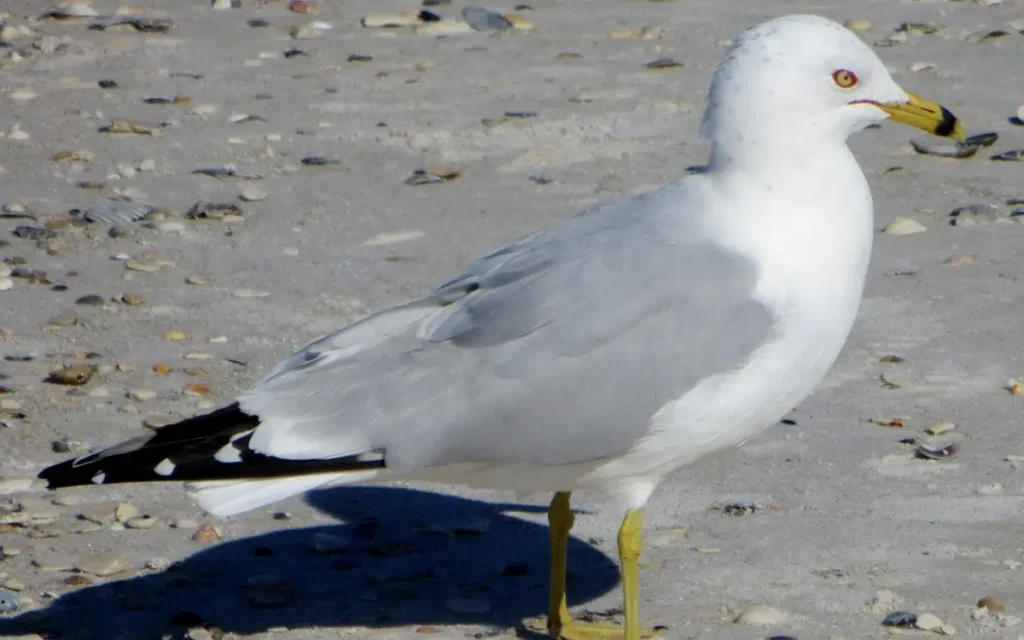
The Ring-billed Gull is a medium-sized white bird commonly seen along Alabama’s lakes, rivers, and even urban areas. Its distinctive black ring around the bill helps identify it among other gulls.
- Habitat: Beaches, lakes, and parking lots.
- Fun Fact: It’s an adaptable species, often scavenging for food in unexpected places like landfills.
10.Herring Gull
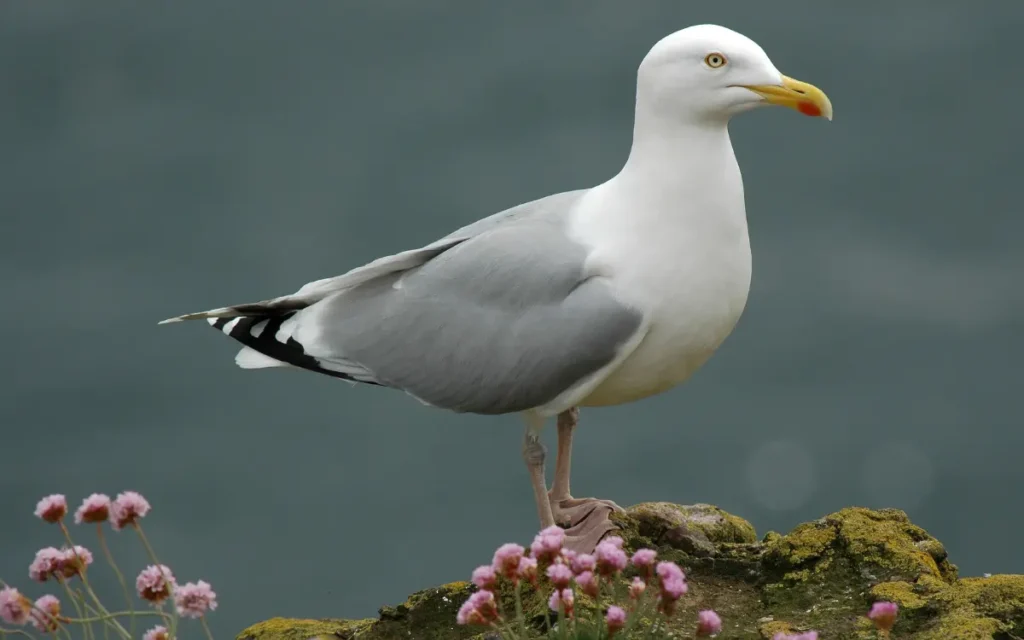
The Herring Gull is a large, white bird with a pale gray back and yellow bill. Often seen near water, it’s one of the most widespread gull species and can be spotted along Alabama’s coasts and lakes.
- Habitat: Coastal areas, rivers, and lakes.
- Fun Fact: Known for its opportunistic feeding habits, including stealing food from other birds.
11.Forster’s Tern
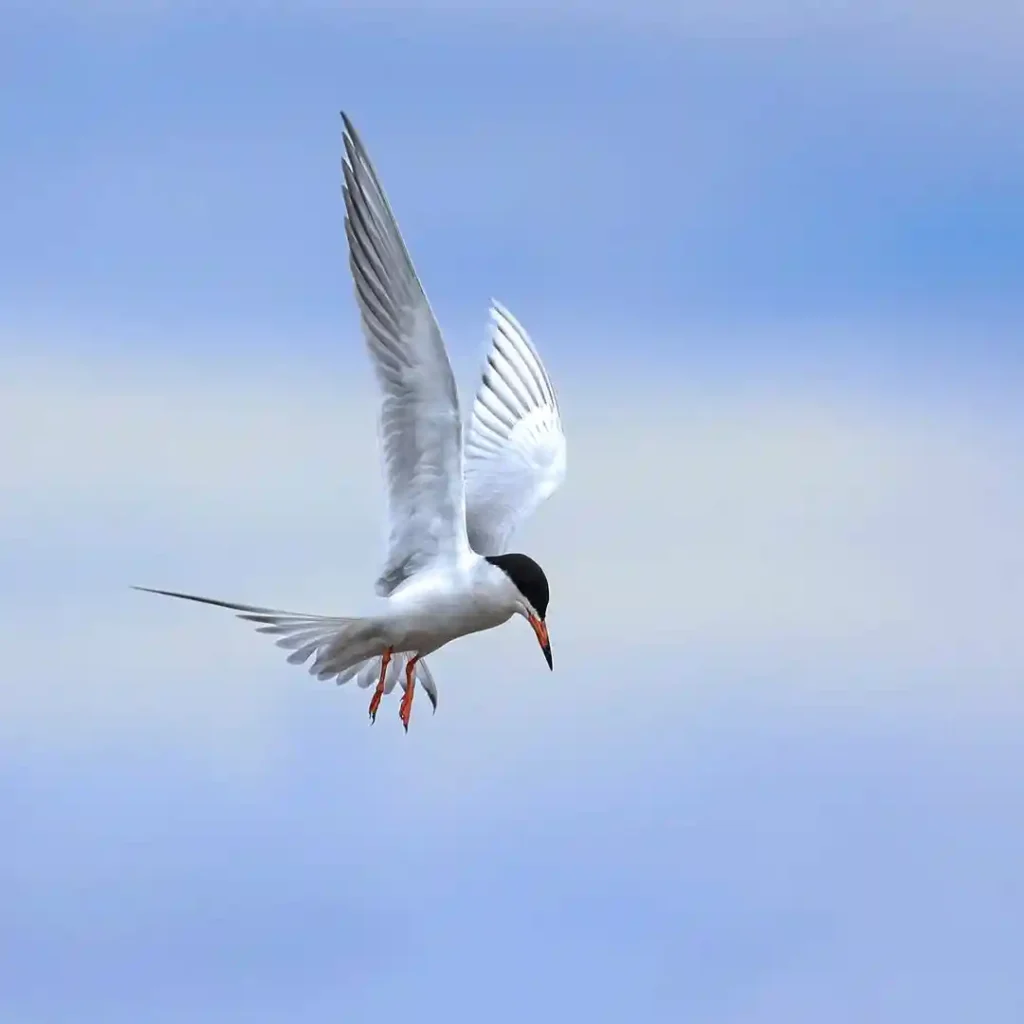
Forster’s Tern is a sleek, white bird with a deeply forked tail and graceful flight. It is often found hovering over Alabama’s coastal marshes and inland lakes in search of fish.
- Habitat: Coastal marshes and inland lakes.
- Fun Fact: Its high-pitched, chattering call is a familiar sound in its habitat.
12.Royal Tern
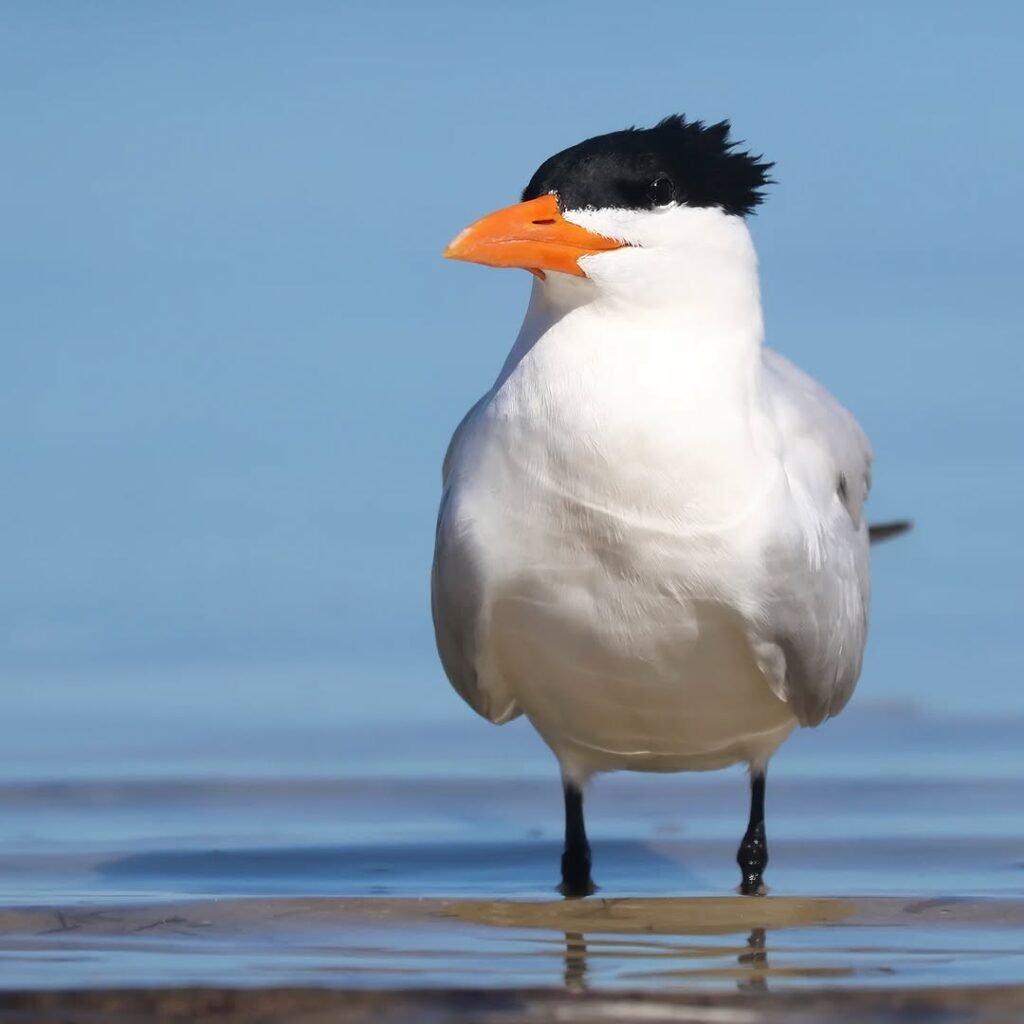
The Royal Tern is a striking coastal bird with a bright orange bill and a black crest during the breeding season. It’s commonly seen along Alabama’s beaches, diving into the water to catch fish.
- Habitat: Coastal beaches and bays.
- Fun Fact: It often forms large colonies, nesting in groups for safety.
13.Caspian Tern
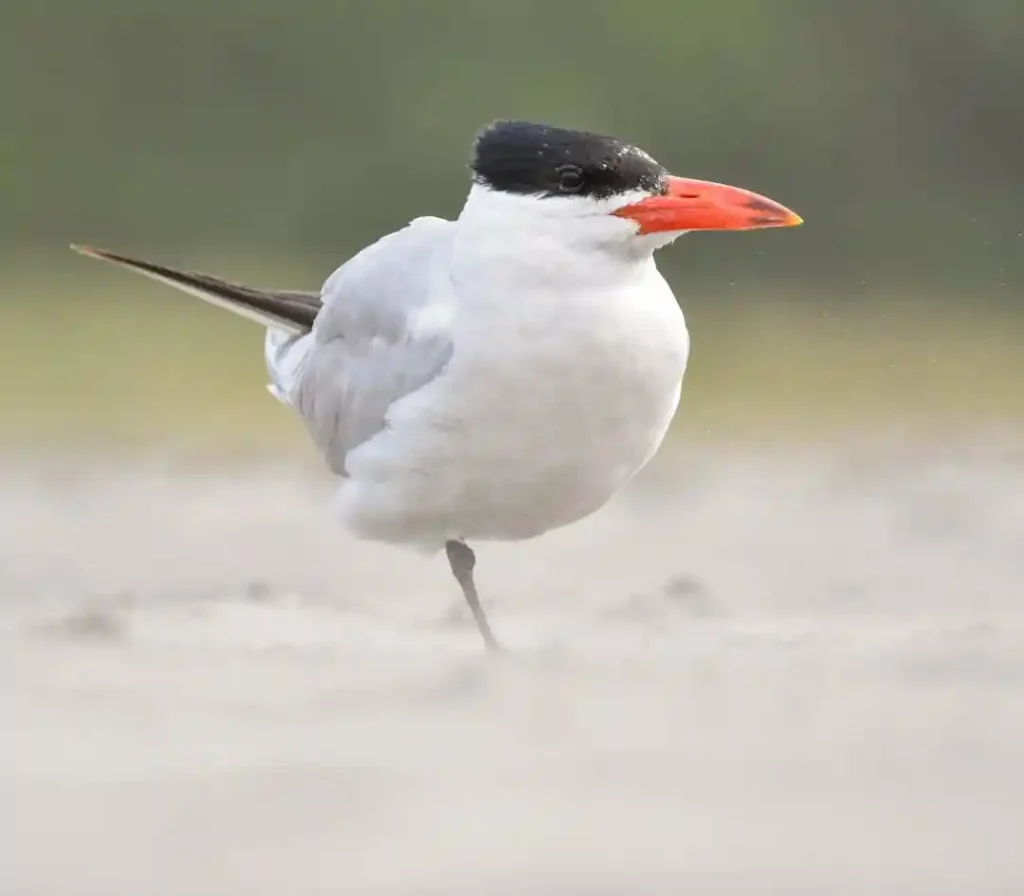
The Caspian Tern is the largest tern species, easily recognized by its robust red bill and loud, harsh calls. It’s often seen near Alabama’s larger bodies of water.
- Habitat: Coastal areas and large inland lakes.
- Fun Fact: It’s known for its powerful flight and dramatic dives into water to catch fish.
14.Bonaparte’s Gull

The Bonaparte’s Gull is a smaller and more delicate gull species often seen during migration in Alabama. It’s easily identified by its white body and black-tipped wings.
- Habitat: Lakes and rivers during migration.
- Fun Fact: Unlike other gulls, it often nests in trees, a unique behavior among its kind.
15.Little Blue Heron (Juvenile)
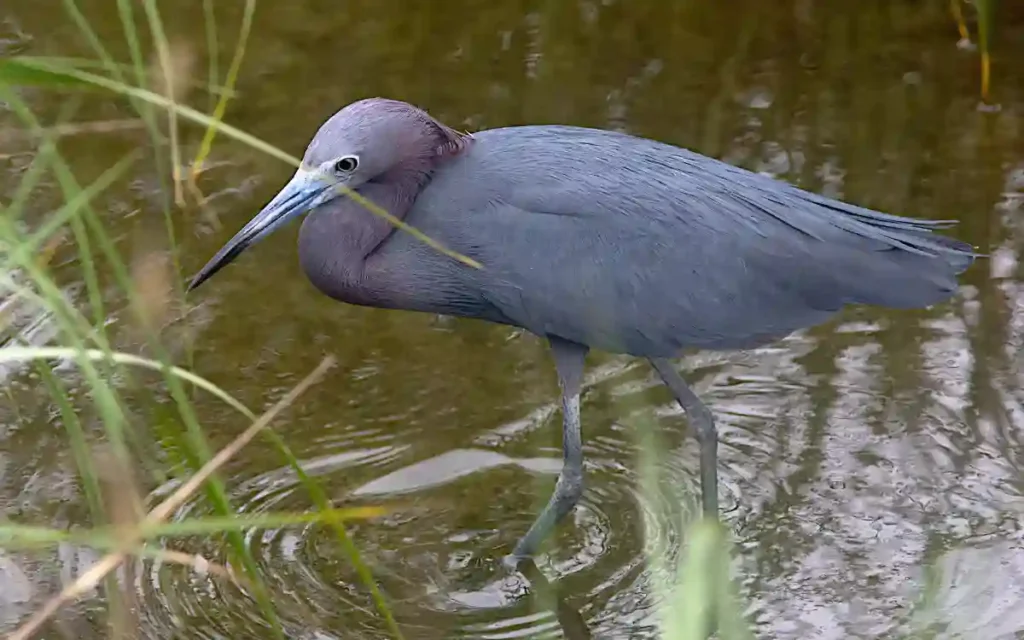
The juvenile Little Blue Heron is entirely white, transitioning to its signature blue plumage as it matures. These young birds are often seen wading in shallow water, feeding alongside other herons.
- Habitat: Wetlands and marshes.
- Fun Fact: Its white coloration as a juvenile helps it blend in with flocks of Snowy Egrets for protection.
16.Whooping Crane
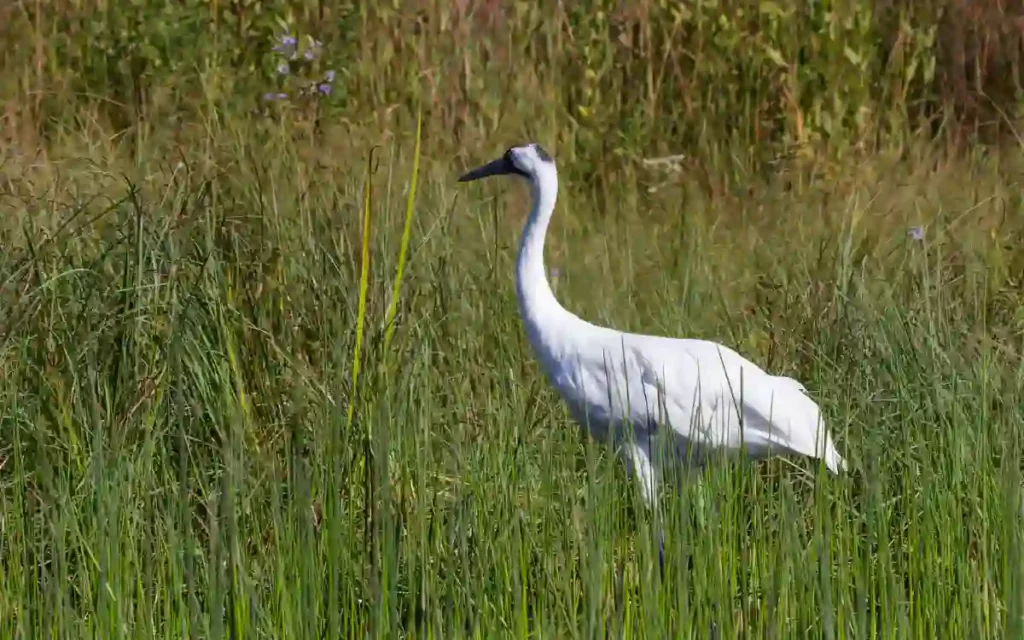
The Whooping Crane is a tall, white bird with black wingtips and a striking red crown. It is one of the rarest bird species, with small populations occasionally seen in Alabama’s wetlands during migration.
- Habitat: Wetlands and marshes.
- Fun Fact: Standing over 5 feet tall, it is the tallest bird in North America.
17.American Avocet (Winter Plumage)

In winter, the American Avocet’s plumage turns mostly white, making it an elegant sight in Alabama’s wetlands. Its long, slender legs and upturned bill make it easy to identify.
- Habitat: Shallow wetlands and coastal lagoons.
- Fun Fact: Feeds by sweeping its upturned bill side to side in the water.
Read also: 15 Shorebirds in Alabama
18.Northern Gannet

The Northern Gannet is a striking seabird with white plumage and black wingtips, often seen diving into coastal waters to catch fish. It’s a rare but notable visitor to Alabama’s Gulf coast.
- Habitat: Coastal waters and the Gulf of Mexico.
- Fun Fact: Its plunge-diving technique can take it to depths of over 30 feet.
19.White-tailed Kite

The White-tailed Kite is a graceful raptor with mostly white plumage, black shoulder patches, and a unique hovering flight pattern. It’s occasionally seen hunting over Alabama’s open grasslands.
- Habitat: Open grasslands and marshes.
- Fun Fact: Often hovers in place while scanning the ground for prey, a behavior called “kiting.”
20.Snow Goose
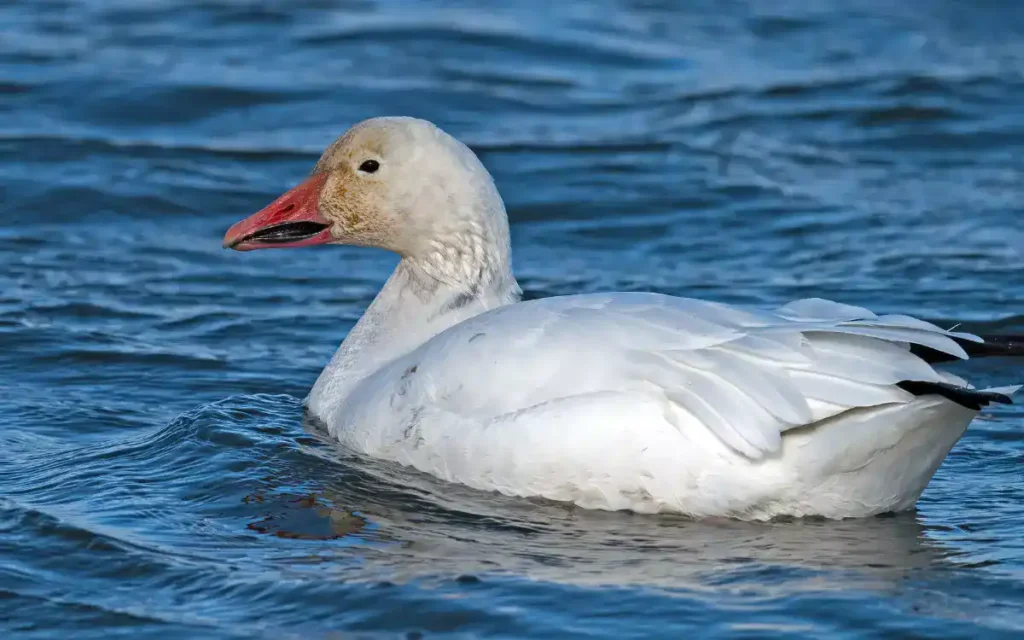
The Snow Goose is a migratory bird often seen in large flocks in Alabama during the winter. Its bright white body and contrasting black wingtips make it a striking sight in open fields and wetlands.
- Habitat: Wetlands, fields, and coastal areas during migration.
- Fun Fact: They form lifelong pair bonds and often migrate in large family groups.
Read also: 20 Largest Birds In Alabama
FAQs
What are the most common white birds in Alabama?
Common white birds include the Great Egret, Snowy Egret, Cattle Egret, American White Pelican, and White Ibis.
Where can I spot white birds in Alabama?
You can find them in wetlands, coastal areas, marshes, and large lakes like those at Bon Secour National Wildlife Refuge and Dauphin Island.
What is the largest white bird in Alabama?
The American White Pelican is the largest white bird, with a wingspan of up to 9 feet.
Are there any endangered white birds in Alabama?
Yes, the Whooping Crane, one of the rarest birds, can occasionally be seen in Alabama during migration.
When is the best time to see white birds in Alabama?
The best time is during migration seasons in spring and fall, though many white birds can be seen year-round.



